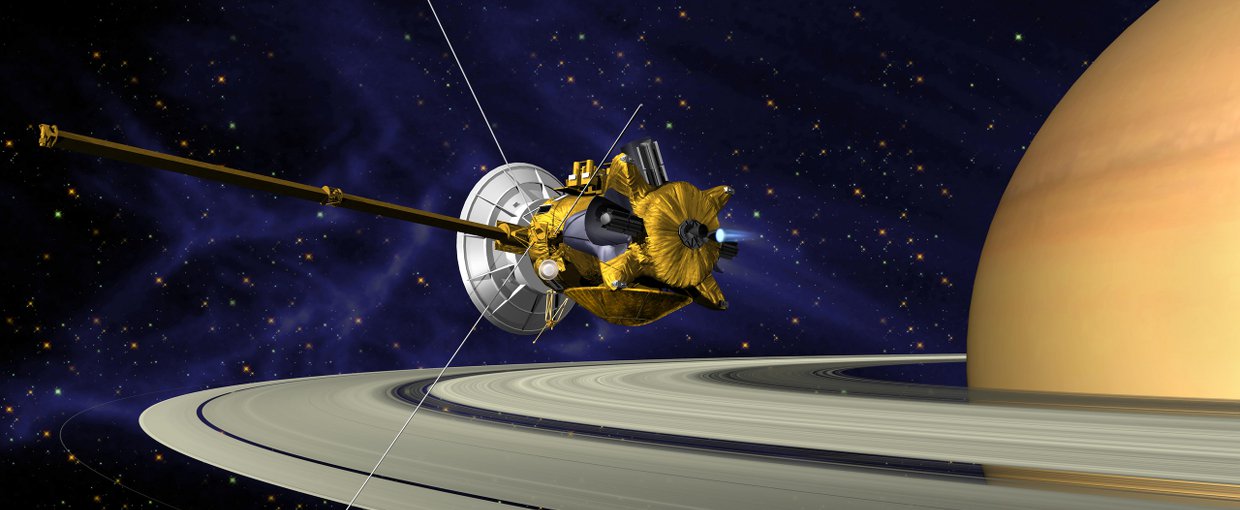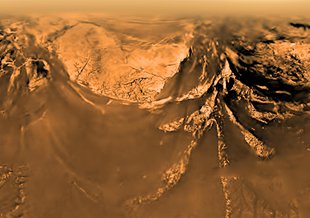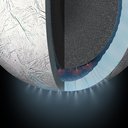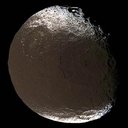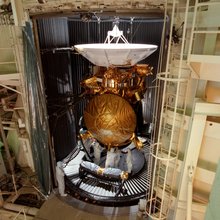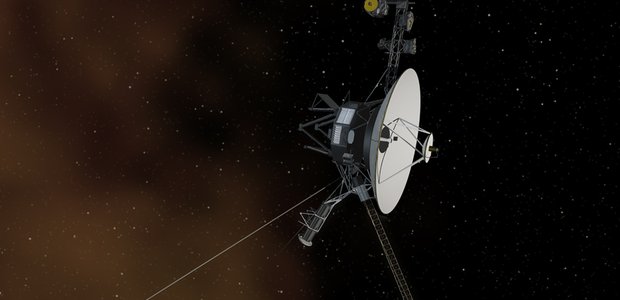- Launch Date October 14, 1997
- Arrival Date January 14, 2005
- End DateSeptember 15, 2017
- Mission TypeOrbiter/Lander
- TargetSaturn system
Mission Overview
The Cassini-Huygens Saturn Orbiter and Titan Probe was launched in 1997 and arrived at Saturn in 2004. The mission completed operations on September 15, 2017. At Saturn, Cassini released the Huygens probe toward the planet’s gas-shrouded moon Titan. Huygens touched down on the moon on January 14, 2005, and became the first robotic explorer to land on an outer solar system body.
Web Pages for accessing Cassini data:
The Planetary Data System Atmospheres Node announced the release of a preliminary version of newly designed, comprehensive web pages for accessing Cassini mission data: https://pds-atmospheres.nmsu.edu/data_and_services/atmospheres_data/Cassini/Cassini.html. These pages are the culmination of a joint effort of the Cassini team and PDS nodes to provide a central hub that links to wide range of resources from this complex mission.
Relevance to Astrobiology
The Cassini-Huygens mission has provided invaluable data for astrobiologists studying life’s potential on the moons of giant planets.
For the first time, astrobiologists were able to see through the thick atmosphere of Titan and study the moon’s surface, where they found lakes and seas filled with liquid hydrocarbons. Astrobiologists are studying what these liquid hydrocarbons could mean for life’s potential on Titan.
Cassini-Huygens data also revealed that that Titan could have reserves of liquid water, similar to those on Jupiter’s moon Europa, trapped beneath its frigid surface. This finding opened our eyes to new possibilities for habitable environments on the mysterious moon.
Cassini also witnessed icy plumes erupting from Saturn’s small moon Enceladus. When flying through the plumes, the spacecraft found evidence of saltwater and organic chemicals. This raised questions about whether or not habitable environments could exist beneath the surface of Enceladus.
Cassini’s primary mission was completed in June 2008, but operations continued until September 15, 2017. Scientists will continue to work with the spectacular data collected by Cassini for years to come, helping astrobiologists understand potential habitats for life in the Solar System. This work will also help determine processes that could lead to habitability on the moons of giant planets around distant stars.
NASA Astrobiology Involvement
Researchers supported by elements of the Astrobiology Program were (and continue to be) involved in numerous aspects of the Cassini-Huygens mission, from instrument development to data collection and analysis. Studying the Saturn system and the habitability of Saturn’s moons is of direct relevance to the goals of the Astrobiology Program.
Thanks in part to the Cassini-Huygens mission, Enceladus and Titan are now two of astrobiology’s highest priority targets for exploration. The Astrobiology program devotes a great deal of resources toward determining life’s potential on these unique moons. Studies supported by the program include Earth-based research in laboratories and in the field that are used to interpret data being returned by the Cassini mission. The Astrobiology Program also supports the development of instruments that will be used on future missions to the Saturn system.
The Astrobiologists
NAI University of Hawaii, Manoa Team member Toby Owen is a Co-I and interdisciplinary scientist on the Cassini mission, and one of the scientists that led the mission to a new start as a NASA-ESA mission.
NAI Arizona State University Team member, graduate student Christopher Glein’s interpretation of Cassini data is enhanced by research into the source of material in Enceladus plumes. Glein, Mikhail Zolotov, and Everett Shock are researching the origin of Titan’s atmosphere.
NAI Jet Propulsion Laboratory (Icy Worlds) Team Co-I Christophe Sotin is a Cassini-Huygens Co-Investigator. His involvement includes development of thermal evolution models of icy satellites which have been constrained by observations of their atmosphere and surface geology. Sotin is also involved in implementing the observations and processing data from the VIMS/Cassini spectrometer.
NAI Jet Propulsion Laboratory (Titan) Team member Jonathan Lunine is a Titan Interdisciplinary Scientist on the Cassini Mission. Roger Yelle is a Co-I on the Cassini Ion and Neutral Mass Spectrometer. Robert West is a Co-I on both the Imaging Science System and Ultraviolet Imaging Spectrograph science teams.

